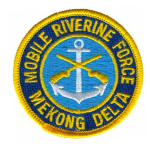In the fall of 1862, General Ulysses Grant packed 32,000 weary Union soldiers onto river boats and began the siege of the vital Confederate city of Vicksburg, Ms. Using the Mississippi Delta Waterways to position Navy gunboats and to transport men and equipment, the superior Northern forces penetrated the river strongholds.
General Grant’s forces teaming with Rear Admiral David Porter’s Mobile Riverine Force (MRF) carried the North’s offensive deep into Dixie. Fleets of armor-protected boats provided Fire support and ferried troops as the Union assaulted the series of fortifications along the Mississippi.
Thundering volleys from Naval Gunboats and mortar vessels played a decisive role in the North’s successful winter and spring campaigns of 1862 and 1863. After the defeat of the Confederates in the battle of Port Gibson on April 30, the fortress of Vicksburg fell on July 4.
River assaults also played dominant roles as key Union victories claimed Belmont, Fort Henry, and Shiloh. Riverine warfare virtually split the Confederacy in two. The Riverine Force was born. It’s our history and our birth as a Mobile Riverine Force fighting unit… ABM



